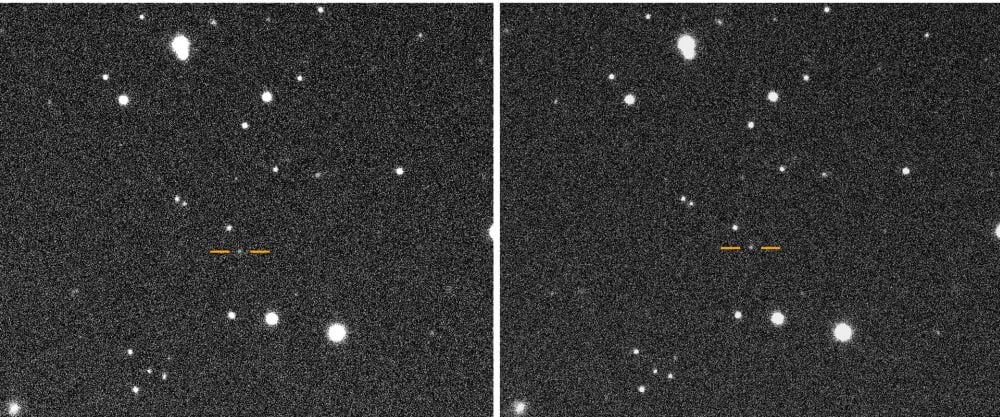Science
Astronomers Discover New Asteroid 2025 SC79 Near Earth

A newly discovered asteroid, named 2025 SC79, has been identified as a close neighbor to Earth, raising awareness about the potential hazards posed by such celestial bodies. The asteroid was located by Scott S. Sheppard, an astronomer at the Carnegie Institute for Science, on September 27, 2023, utilizing the Dark Energy Camera on the National Science Foundation’s Blanco 4-meter telescope.
Characteristics of 2025 SC79
2025 SC79 belongs to the Atira asteroid group, which consists of near-Earth asteroids that have orbits entirely within that of Earth. This group is notably rare; 2025 SC79 is the 39th member of this category. Asteroids in this group are difficult to detect due to their proximity to the Sun, which obscures their visibility with its intense glare.
This particular asteroid measures approximately 700 metres (about 2,300 feet
2025 SC79 is also notable for its orbital characteristics. It completes a trip around the Sun in just 128 days, making it the third fastest asteroid in terms of orbital period. For comparison, Mercury‘s orbital period is 88 days. Detecting asteroids like 2025 SC79 poses significant challenges for astronomers. “The most dangerous asteroids are the most difficult to detect,” Sheppard stated in a press release. He emphasized that while most asteroid research occurs during nighttime, those near the Sun can only be observed during twilight conditions—just before sunrise or just after sunset. This makes them particularly elusive and raises concerns about their potential to impact Earth. The discovery of 2025 SC79 was subsequently confirmed using two other telescopes: the NSF’s Gemini telescope and the Carnegie Science’s Magellan telescopes. This collaborative effort underscores the importance of multiple observational tools in tracking potentially hazardous objects. As 2025 SC79 is set to disappear behind the Sun for a few months, further observations will be necessary to better understand its composition and origins. The asteroid’s ability to withstand the Sun’s heat raises questions about its material properties and history, including whether it was dislodged from the main asteroid belt and captured by the Sun’s gravity. Sheppard concluded, “Understanding how these objects arrived at their current locations can help us protect our planet and enhance our knowledge of Solar System history.” The ongoing study of asteroids like 2025 SC79 is crucial as scientists seek to mitigate risks associated with potential impacts on Earth.The Challenge of Detection
-

 Health4 days ago
Health4 days agoRare Brain Condition Discovered More Common in New Mexico
-

 Politics5 days ago
Politics5 days agoPrince Andrew Steps Back from Royal Duties Following Epstein Memoir
-

 Sports5 days ago
Sports5 days agoMLS Decision Day 2025: Playoff Spots on the Line as Teams Clash
-

 Health5 days ago
Health5 days agoRemembering Mary Ingleby: A Life of Love, Teaching, and Music
-

 Entertainment5 days ago
Entertainment5 days agoTrump Commutes George Santos’ Sentence, Sparks Controversy
-

 Science5 days ago
Science5 days agoIdaho State University Launches Haunted Science Laboratory on Oct. 25
-

 World5 days ago
World5 days agoYoung Driver Dies in Collision with Box Truck in El Cajon
-

 Lifestyle5 days ago
Lifestyle5 days agoKent Hamilton Named Southeastern Farmer of the Year at Expo
-

 Politics5 days ago
Politics5 days agoNavy Veteran Max Quattromani Launches Campaign for Assessor Seat
-

 Sports5 days ago
Sports5 days agoSaquon Barkley Reacts to James Franklin’s Dismissal from Penn State
-

 Health3 days ago
Health3 days agoScientists Warn: Human Brain Struggles to Function After Midnight
-

 World5 days ago
World5 days agoHamas to Return Additional Hostage Remains on Friday









